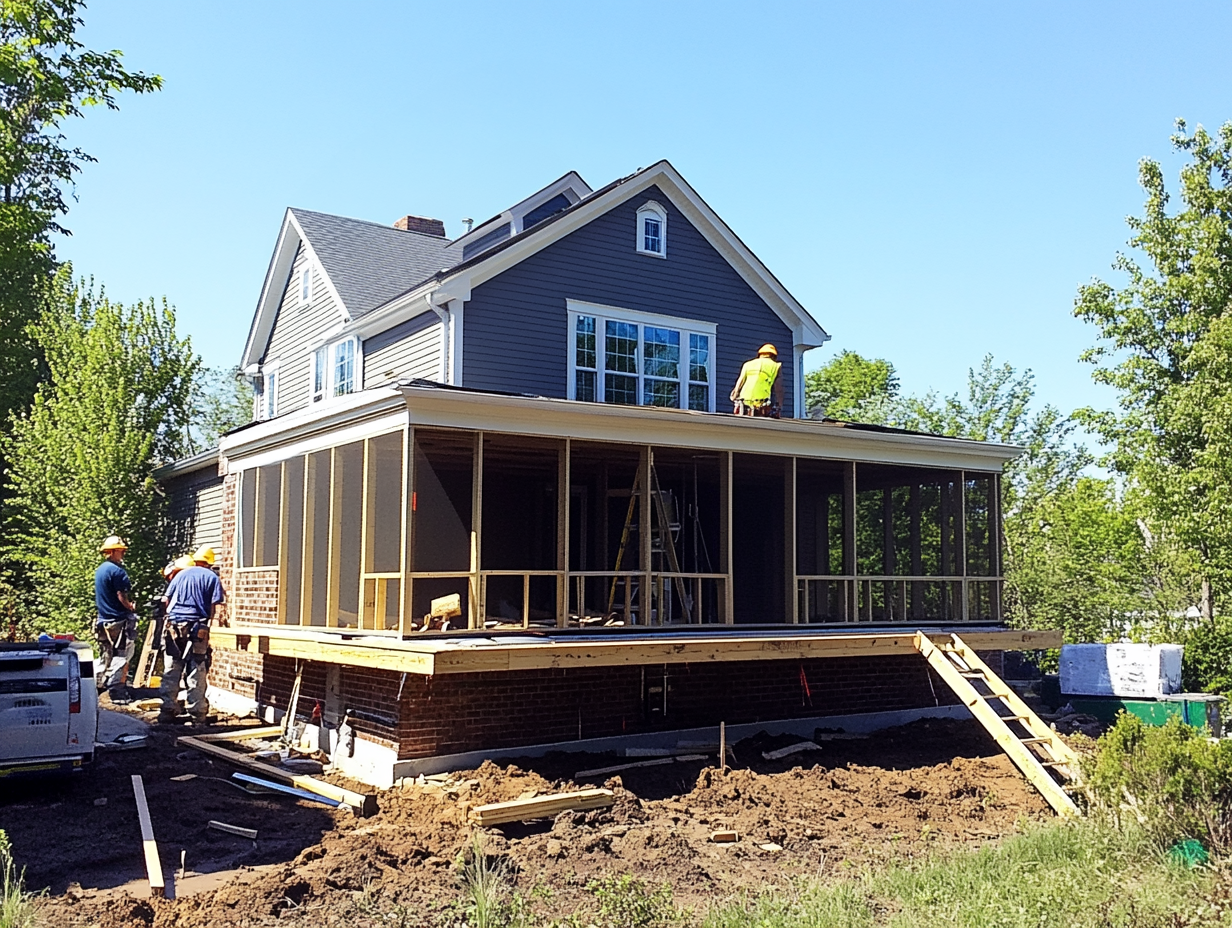Renovating your home can be exciting, but it’s not as simple as just picking up tools and getting to work. Depending on what kind of updates you’re planning, you may need a permit before you start. Local building departments enforce permit requirements to ensure safety, compliance with codes, and adherence to zoning laws. Knowing when a permit is necessary is crucial to avoid fines, delays, or even having to undo your hard work.
What Types of Projects Need Permits?
Not all home updates need permits, but many do—especially the more complex and involved ones. Here are some common projects that may require one, depending on where you live:
1. Structural Changes
Anytime you’re changing the layout or structure of your home—such as knocking down walls, adding rooms, or altering your roofline—you’ll most likely need a permit. Structural work impacts the integrity of your home, so inspections are necessary to ensure everything is built to code.
2. Electrical Work
Even small electrical updates may require a permit. If you’re rewiring your home, installing new outlets, or upgrading your electrical panel, a permit is often required to ensure that the work meets safety standards and won’t pose a fire hazard.
3. Plumbing Changes
Making changes to your plumbing system, like adding new water lines or relocating sinks, can also require permits. This ensures that everything is up to code and that your water system won’t encounter issues down the road, like leaks or contamination.
4. HVAC System Installations
Whether you’re installing a new air conditioning unit or replacing an old furnace, you’ll likely need a permit. HVAC work has to meet energy efficiency standards and ensure proper ventilation and safety, especially with gas appliances.
5. Window and Door Installations
Replacing windows and doors often requires a permit, particularly if the new installation is larger than the old one, affecting the structural aspect of your home. New windows also need to meet energy efficiency codes.
6. Exterior Changes
Big updates to the exterior of your home, like building a deck, adding a porch, or changing your siding, often need a permit. This helps ensure that all additions are safe and comply with local zoning regulations.
7. Fences and Retaining Walls
Building a fence or retaining wall may seem like a small project, but many local governments have specific regulations about how high fences can be, where they can be placed, and what materials can be used—especially if the fence borders a neighbor’s property or public land.
What Projects Usually Don’t Need Permits?
Not every home update is going to require official approval. Here are some common examples of updates you can generally do without a permit:
- Painting (interior or exterior)
- Installing new flooring (carpet, hardwood, tile, etc.)
- Minor landscaping (planting a garden, installing flower beds)
- Replacing fixtures (lighting fixtures, faucets)
- Basic appliance installation (as long as you’re not modifying wiring or plumbing)
However, it’s always a good idea to check with your local building authority just to make sure—regulations can vary from place to place.
Why Is a Permit So Important?
You might be tempted to skip getting a permit to save time or money, but that could backfire. Here’s why permits matter:
1. Safety
Building codes exist to protect you and your home. By requiring permits and inspections, local governments ensure that all work is up to safety standards. Improper electrical work, plumbing issues, or unstable structures can pose serious hazards.
2. Resale Value
If you make changes to your home without the proper permits, you could run into trouble when you try to sell. Home inspectors will often flag unpermitted work, which can delay a sale or require costly fixes to bring everything up to code.
3. Insurance Issues
Unpermitted work may not be covered by your homeowners insurance. If something goes wrong—say, a fire caused by improper electrical work—your insurance company could deny your claim if the work wasn’t done with the proper permits.
4. Fines and Penalties
If your local building department finds out you’ve made changes without a permit, you could face fines and may be required to undo the work and start over, which could be expensive and time-consuming.
How to Get a Permit
Getting a permit can seem like a hassle, but it’s a necessary step for many projects. Here’s a basic rundown of how to go about it:
- Check with Your Local Building Department
The first step is to contact your local building department or visit their website. You’ll be able to find out what’s required for your specific project, including any forms, fees, and inspections. - Submit Plans
For larger projects, you may need to submit detailed plans or drawings of the work you intend to do. This helps the department determine if everything is up to code. - Pay Permit Fees
There’s usually a fee associated with getting a permit, which can vary depending on the scope of the work. Small projects might have minimal fees, while larger remodels could be more expensive. - Schedule Inspections
Once your permit is approved, you’ll need to schedule inspections throughout the project. These inspections ensure that the work meets all building codes and regulations. - Get Final Approval
After the project is complete, you’ll have a final inspection. If everything passes, you’ll get official approval, and you can enjoy your home update worry-free!
How Long Does the Permit Process Take?
The length of time it takes to get a permit can vary depending on your location and the complexity of the project. Smaller projects, like replacing a window, may only take a few days, while larger renovations might take a few weeks or even longer. Be sure to factor this into your project timeline to avoid unexpected delays.
FAQs
Q. Do I need a permit to install a fence?
A. Yes, in most cases. Height restrictions and location rules are common, so it’s best to check with your local building authority.
Q. What happens if I do work without a permit?
A. You could face fines, be required to undo the work, or encounter issues when selling your home.
Q. Are there different types of permits?
A. Yes, there are building permits, electrical permits, plumbing permits, and more, depending on the scope of the work.
Wrapping It Up
Navigating the world of home renovation permits might seem overwhelming, but it’s an essential part of the process. Ensuring your project meets all the required regulations protects your investment, keeps your family safe, and saves you headaches in the long run. Whether you’re tackling a major remodel or just adding a new fence, it’s always smart to check with your local building department to find out what’s required.







